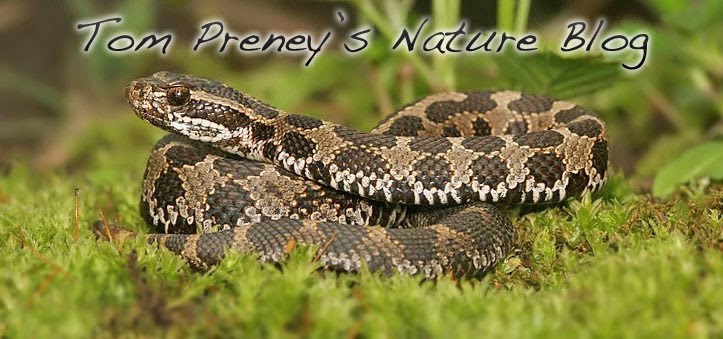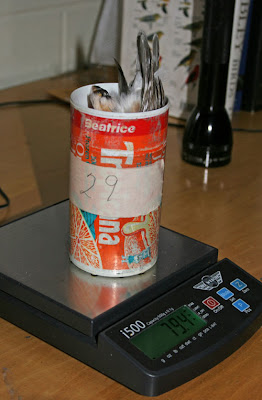Northern Saw-whet Owl
My wife Sarah getting acquainted with one of the little "furbies.''
The banding station and equipment.
After the owl is retrieved from the mist net a band is crimped around the leg of the bird. This is the most important part so it is done first. All banders do things a little bit differently, but this is a sure way not to forget to put the band on before releasing the bird. It seems silly, but when you're banding many birds until the early hours of the morning it's easy to do. Owls are nocturnal and are active when we're used to sleeping; lots of coffee is essential on these long nights.
Two measurements are taken--wing and tail length. The "wing chord" is measured from the bend in the wing to the end of the longest primary feather. These measurements, along with the weight of the bird, will determine the sex of the individual. The females are larger than the males which is typical in most raptor species.
The owl in the photo weighs 79.4 grams, which is close to the average weight of most male Saw-whet Owls. Females average 92 grams. Owls are placed upside down in a cylindrical container for weighing. Surprisingly, they don't freak out during this process; probably because it throws off their equilibrium.
The last thing we do before releasing the bird is determine its age. The wing is extended and placed under an ultraviolet light. Something extremely fascinating is that the fresh feathers fluoresce pink under the light. Determining molt pattern and feather wear is how the birds are aged. The bird in the photo below is a hatch year bird--notice how all of the feathers are glowing pink. If it was after hatch year, not all of the primary feathers would fluoresce.
Owls have an acute sense of hearing; it may be even more developed then their eyesight. Owls rely on their superb hearing to locate prey in pure darkness. Something that was new to me is the size of the ear openings on the side of their head (note the back of the eyeball inside the opening, cool!) The ears of an owl are asymmetrical, which allows them to pin-point locations of the sound with ease.
Northern Saw-whet Owl (Ontario's smallest owl)













Very intersting and informative Tom. Great photos of a beautiful bird. I was in that same banding lab watching this process for some warblers, flycatchers and vireos two weeks ago. - Dwayne
ReplyDeleteHello Tom and Sarah
ReplyDeleteBeautiful, really touching your images. It made me smile like when seeing a new born baby, the tiny Saw-whet Owl on top of your palm. Your pictures show your love for any form of life. You have a special heart to put so interesting information about these birds.
Congratulations - Mihaela S.G.